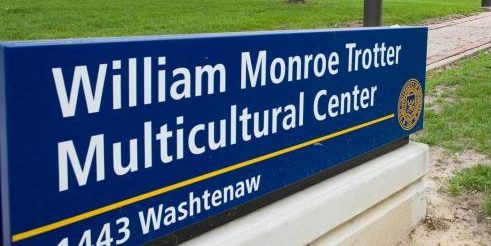Michigan graduate student and Central Student Government policy advisor Byron D. Brooks is upset that there are too many people of a different race in a certain campus building. He believes this building is supposed to be a “Mecca” for students of his race and that people of different races being in it is detrimental to his group.
Most people will read this description and have a certain word in mind to describe Brooks: racist.
Unfortunately, the common sense of decency does not appear to be so common on this campus. For many, it matters what races the parties involved are. Brooks is black, and he feels threatened by white students.
Most people will read this description and have a certain word in mind to describe Brooks: racist.
In a February 22 letter addressed to the Board of Regents and Michigan Administration at large, Brooks lamented the presence of “white students crowding, and moreso colonizing” the Trotter Multicultural Center, which is “supposed to be a safe space for students of color.”
Black students, Brooks writes, are being “oppressed through the power and privilege that is embedded within our community.” One instance of this oppression is “white student organizations kicking black and brown students out of spaces within trotter because their white organizations reserved the space.”
It has become almost a cliche to say it at this point, but if a white advisor to CSG wrote a letter to the administration articulating his discomfort that there are too many black students in a campus space, he would be deemed unfit for office.
It has become almost a cliche to say it at this point, but if a white advisor to CSG wrote a letter to the administration articulating his discomfort that there are too many black students in a campus space, he would be deemed unfit for office.
This is rightfully so, as CSG employees and Michigan students more broadly have a duty to treat people of all races equally, and Brooks’s letter calls into question his ability to do so.
He is a bit coy in saying exactly what he wants the regents to do, writing that Michigan should “uphold the values of equity by protecting, and reestablishing Trotter as a safe space for people of color.”
His words are vague because he knows the only thing that would remedy his concerns is some form of racial segregation or privilege.
If there are too many white people in a certain place, the solution is to remove them. How does the university do this? Should it release a statement saying white people are unwelcome in a campus space that their tuition and tax dollars fund? Should the people who run Trotter institute a racial quota system and not allow certain races in?
What of his complaint that black students are being kicked out of meeting spaces that “white student organizations” (I would love an explanation of what qualifies a student org as “white”) have reserved? Should students of color be given a veto that overrides the reservation of student orgs that are not exclusively or predominantly black? Should student orgs be given first priority for reservations based on their racial composition?
The answer to all of these questions would be “yes” if we accept Brooks’s premise that white people in Trotter make black students there unsafe, and it appears that he would want policies similar to the ones I have listed above. He believes that “safe spaces go beyond symbolic gestures and the regents should enforce respect for these spaces,” according to The Michigan Daily.
He is not the only person on campus who feels this way. Another student interviewed by The Daily, Black Student Union member Devyn Griffin, voiced similar concerns.
“You can’t just throw everything in a pot and expect someone to feel like that’s an accurate representation of their culture or somewhere that they can feel safe,” he said.
Martin Luther King Jr. said in his “I Have a Dream” speech that he longed for the day when “little Black boys and Black girls will be able to join hands with little white boys and white girls as sisters and brothers.” He did not dream of a place where black children would be segregated into a place where they are protected from the predations of white people. An integrated America was that place.
If students, whether white or black, feel uncomfortable around people of other races the solution is more integration, not less.
We are much closer to achieving that dream in 2022 than we were in 1963, but this kind of effort from Brooks and others removes us from it.
If students, whether white or black, feel uncomfortable around people of other races the solution is more integration, not less. The only way to overcome racial biases is to bring people together so that they can see each other not as whites or blacks, but as humans.
Also, I wrote the entirety of this piece while sitting in the Trotter Multicultural Center. Cry more, Byron.
